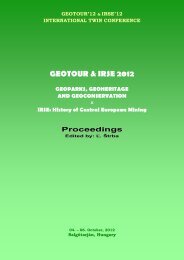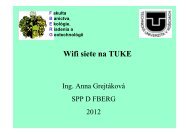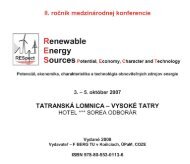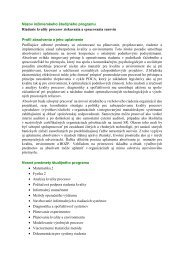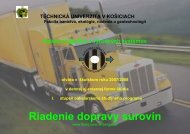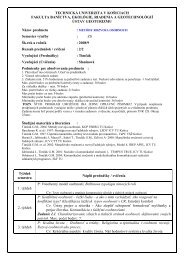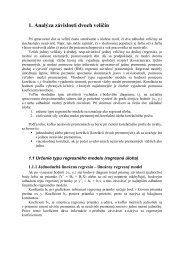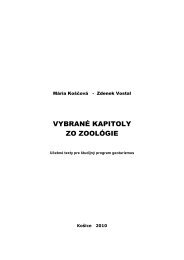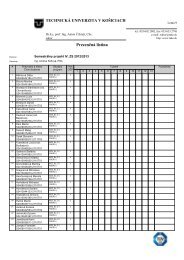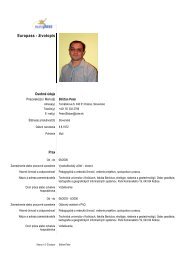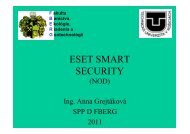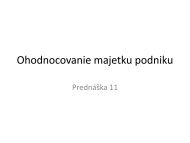GEOTOUR & IRSE 2012.pdf - Fakulta BERG - TUKE
GEOTOUR & IRSE 2012.pdf - Fakulta BERG - TUKE
GEOTOUR & IRSE 2012.pdf - Fakulta BERG - TUKE
Create successful ePaper yourself
Turn your PDF publications into a flip-book with our unique Google optimized e-Paper software.
Salgótarján, 04. – 06. 2012<br />
MINING AND GEOLOGICAL HERITAGE PROTECTION AS CHALLENGE FOR LOCAL<br />
COMMUNITIES<br />
Agata Juzyk, Jan Kudełko, Anna Szczerbiak<br />
KGHM CUPRUM Ltd Research & Development Centre, Wrocław<br />
ABSTRACT<br />
This Article attempts to present a problem concerning restoration of areas degraded by post-mining<br />
activity, establishing of new geotourist functions and benefits thereof for the local communities.<br />
Lower Silesia Province offers substantial potential for this type of projects. A restoration project<br />
related to post-mining relicts and consisting in constructing of a tourist route referred to as “Tracing<br />
evidence of old times ore mining” currently in progress in Mirsk Commune located in the southwestern<br />
part of Lower Silesia Province, served as an example for the purposes hereof.<br />
Introduction<br />
Pursuing activities for protection of the former mining facilities is necessary due to their<br />
historic value and to the problem of their proper preservation. Still the efforts for preservation,<br />
monitoring and protection of dormant mine facilities accessible for tourists, require proper<br />
administration of mining elements of cultural heritage, based on relevant legal control.<br />
Making an element of cultural heritage accessible, results from the dialog and cooperation<br />
between several institutions and research centres, whose efforts are oriented for the scientific,<br />
technical, organizational, legal and statutory support.<br />
The main aim of activities pursued on the European level is to bring about the potential<br />
partnership in multi-disciplinary cooperation which would comprise various institutions and<br />
services oriented for forming the best protection, preservation and for emphasizing the<br />
cultural value of the identified and accessible industrial sites.<br />
The latter particularly concerns:<br />
Ministries, e.g. of the Environment, Economy, Culture, Foreign Affairs,<br />
geological, mining and archaeological services,<br />
European, state and regional governments,<br />
research institutions, research and development centres,<br />
the European Council, UN and UNESCO,<br />
local governments,<br />
boards of large industrial plants,<br />
professional and social organizations,<br />
travel agencies,<br />
job organization.<br />
PROTECTION OF GEOLOGICAL AND MINING HERITAGE<br />
One of the issues of European policy is the proper assessment of its influence for cultural<br />
heritage. The mentioned assessment covers profound analysis of the connections and<br />
relationships between various fields of activity or occurring events (e.g. relationship between<br />
agriculture and archaeological discoveries or between the degree of air pollution and<br />
deteriorating state of preservation of technical sites). The next issue is linked to evaluation of<br />
the actual interest of the Europeans in elements of cultural heritage and in consequence, in<br />
gaining financial resources for activities connected with protection and restoration of<br />
monuments, according to the present legislation (Conseil de l‟Europe, 1984).<br />
Among the cultural heritage of a particular country/region one shall mention all traces of<br />
human activity in the natural environment. They compose sources of information on human<br />
life and activity, and on historical development of various crafts, technologies and arts.<br />
120



